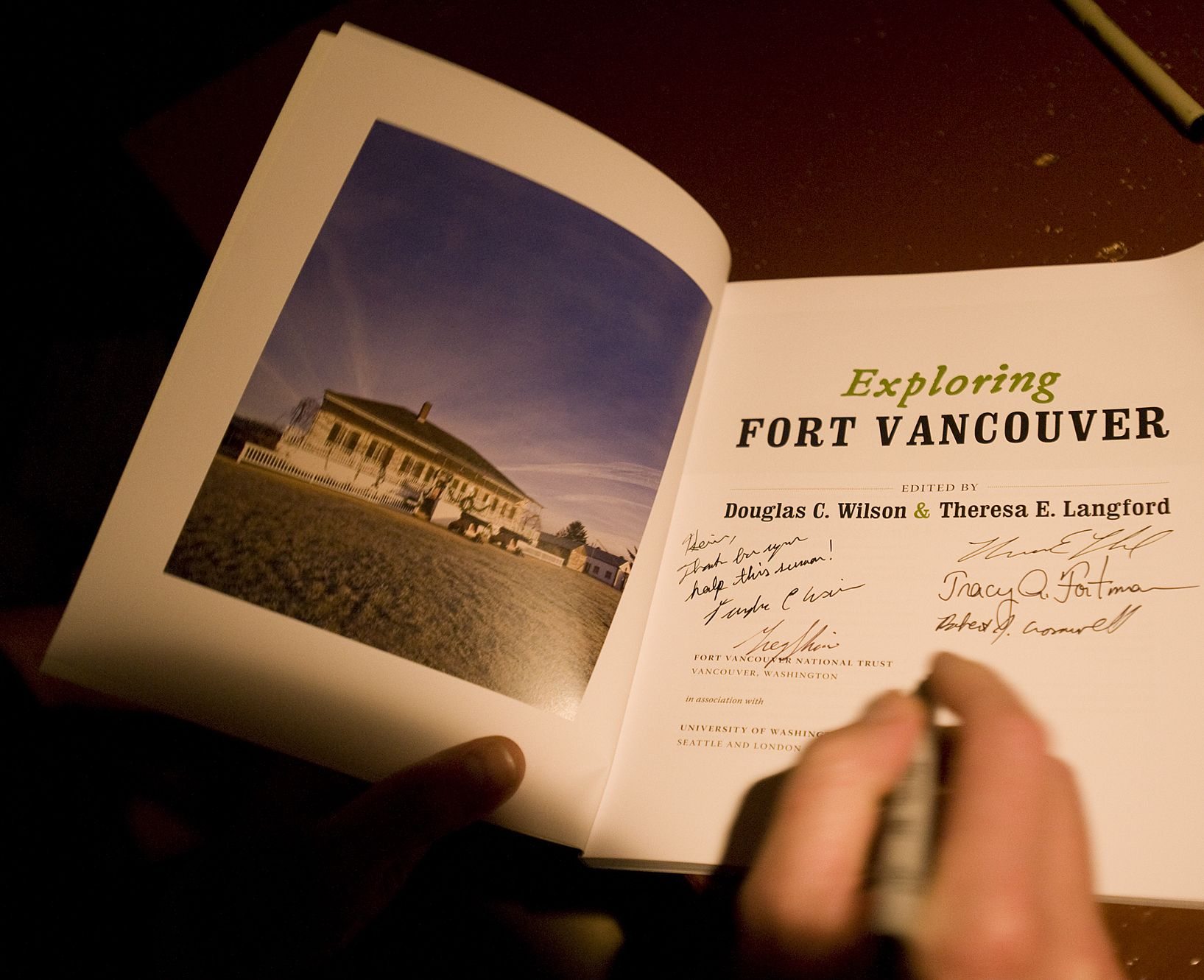The book: $24.95, 128-page paperback, 134 illustrations, three maps.
Co-publishers: Fort Vancouver National Trust and University of Washington Press.
Website: http://www.washington.edu/uwpress/search/books/WILFOR.html.
Available: Fort Vancouver bookstore, 1501 E. Evergreen Blvd. Phone: 360-992-1824.
Two million little bits of history have been gathered by archaeologists at Fort Vancouver over the past 60 years.
It’s an impressive number, but the researchers’ work isn’t about increasing the inventory of artifacts in the museum collection: It’s about telling the human stories of this area’s inhabitants.
Some of those artifacts — ranging from medieval-style nails to Hawaiian coral, from bear-grease hair product to an experimental World War I helmet — are featured in a book about what Doug Wilson deems “the most significant archaeological site in the Northwest.”
The book: $24.95, 128-page paperback, 134 illustrations, three maps.
Co-publishers: Fort Vancouver National Trust and University of Washington Press.
Website:http://www.washington.edu/uwpress/search/books/WILFOR.html.
Available: Fort Vancouver bookstore, 1501 E. Evergreen Blvd. Phone: 360-992-1824.
Wilson, archaeologist at Fort Vancouver National Historic Site, co-edited “Exploring Fort Vancouver,” the recently released book, which provides a guide to much of what’s been unearthed there.
Tracy Fortmann, one of the authors, calls the volume “a real departure from the traditional history book.”
“Tremendous effort and detail was paid to telling the history of this area through artifacts … tangible pieces from the past,” said Fortmann, superintendent of the Fort Vancouver National Historic Site.
Together, the artifacts trace human culture, technology and commerce through the lens of this one place on the north bank of the Columbia River.
In the long period when Northwest tribes were the region’s sole occupants, this community provided a key link between the Pacific Coast and the inland plateau, Wilson said.
Later, during the Hudson’s Bay Company era, Fort Vancouver was the hub of a fur-trading network covering 700,000 square miles — from Russian Alaska to Mexican California, and from the Rocky Mountains to the Hawaiian Islands.
And in more recent times, the site “was the largest U.S. Army post in the region,” Wilson said.
Over the centuries, most of the people who lived there never wrote down their experiences. The things they left behind offer one way to tell their stories, Wilson said.
“These collections embody our collective history,” said Theresa Langford, co-editor of the book and curator at the National Park Service site. “They tell us about technological change and cultural conflict.”
Several artifacts were gathered for a one-night display Oct. 13 as part of the candle-lit book launch in the fur warehouse building inside the Fort Vancouver stockade.
The lid from a jar of “genuine bears grease” hair pomade reflected the reach of commerce.
“The bear was killed in North America, shipped to England, where it was turned into pomade, and shipped to Vancouver in the 1840s,” said archaeologist Bob Cromwell.
Other items in the Fort Vancouver collection reflect the longevity of some technology. One prized item in the museum collection is a brick made when Romans occupied England about 2,000 years ago. And when Hudson’s Bay Company tradesmen made items, a few of the artisans worked in much the same fashion as those ancient Romans.
“The iron works here produced nails that were similar to what the Romans made,” said Cromwell, one of the co-authors along with Fortmann, chief ranger-historian Greg Shine, and museum technician Heidi Pierson. “Black-smithing didn’t change much over 1,500 years.”
Another item on display illustrated the shifting patterns of technology. It’s an Army helmet made during World War I.
With its flip-down metal visor and narrow eye slits, it would have been right at home on the head of a soldier during the Crusades. The helmet was designed by a U.S. Army ordnance officer who also was an expert in medieval armor.
Even the setting summons up echoes of the 1800s. Surrounded by fur pelts, people gathered inside a thick-slabbed wooden room to hear tales told by candlelight.
A piece of coral represents just part of the Hawaiian contribution to the Hudson’s Bay operation.
Ships that transported “Kanaka” workers to Fort Vancouver also brought coral that was ground and mixed with sand to create mortar.
“Talk about globalization,” Cromwell said. Brick masons at the fort used Hawaiian mortar to assemble buildings with bricks shipped from England.
And that’s how a Roman brick wound up at Fort Vancouver. It was made about 2,000 years ago in what was the Roman province of Britannia.
“Someone in England recycled a Roman ruin,” Cromwell said, and that brick eventually wound up at Fort Vancouver.
While that artifact reflects the sweep of history, it also features a tiny touch of everyday life: the paw print of a cat.
“A cat walked across the brick before it was fired,” Cromwell said. “We call it our Celtic kitty.”




